Switching from industrial shampoo to homemade shampoo is not always easy. Certain habits are quickly lost and in particular the foam that we get from conventional shampoos. Therefore, we will see today in this article how to make a foaming homemade shampoo. First of all, we will see the ingredients that make your shampoo lather. Then in a second step, we will see ideas of recipes for you to have a foaming shampoo.
In this section:
How to make a homemade shampoo that foams?
Making your own shampoo allows you to control the ingredients in our cosmetics. Indeed, nowadays most industrial cosmetics contain products widely criticized by the scientific community. These contain ingredients that are harmful to the environment and to our hair and skin: sulfate, silicone, preservative, quats, synthetic perfume and many more. In addition, they have been proven to contain endocrine disruptors. They therefore interfere with the proper functioning of our internal organism.
All these elements lead us to want to make our own shampoo which is much healthier and beneficial for the health of our body and our hair. However, certain washing habits remain essential for some of us… A source of pleasure for some or a necessity for others, the foaming power of shampoo is often very much in demand. And it can be a brake in the realization of its cosmetics which are famous for much less lather. But this is not always the case as we will see!
Where does the foam in shampoo come from?
The foam of your shampoo simply depends on the surfactants used. Surfactants are the washing base of all shampoos. There are more or less natural and more or less foaming.
In one conventional liquid shampoo, the foam is formed thanks to the surfactants which are called sulphates. Those are aggressive surfactants for the scalp and hair. They are chemical and allow to form a very large amount of foam. They are inexpensive, which explains why they are used in liquid shampoos in supermarkets. They are found under the following names:
- Sodium Lauryl Sulfate (SLS),
- Sodium Laureth Sulfate (SLS),
- Ammonium Lauryl Sulfate (ALS),
- Sodium Lauryl Sulfate (LSS).
In homemade shampoos, the surfactants used foam less well because they are not as chemical as shampoos in supermarkets and contain little or no sulfates at all. Therefore, they are healthier. The washing power and the foam therefore have no correlation. The foam simply reflects whether the surfactant used is more or less chemical. But since we know that lather is also essential for some of us, today we will see that certain ingredients allow homemade shampoo to lather very well.
What are the ingredients that make it possible to have a foaming homemade shampoo?
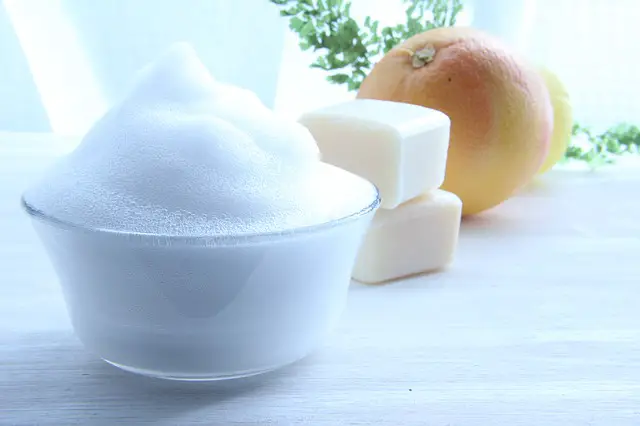
The best ingredients to lather your shampoo:
- Surfactant Sodium Coco Sulphate (SCS)
- Surfactant Sugar Foam ou decyl glucoside
- Marseille's soap
- Castile soap
- Surfactant Babassu Moss ou Babassuamidopropyl betaine
- Vegetable foaming base (the easiest to use for liquid shampoos).
The dosages to be respected by ingredients:
Each percentage is respected according to the total weight of your preparation. For example, for a 100 g shampoo, you will need to put between 40 g and 60 g of Sodium Coco Sulfate.
- Surfactant Sodium Coco Sulphate (SCS): 40% to 60%
- Sugar Foam Surfactant: 3 to 30%
- Marseille's soap : 30 to 70%
- Castile soap: 25% to 40%
- Babassu Foam Surfactant: 2 to 10%
- Vegetable foaming base : 3 to 30%
Warning: Don't expect foam as abundant as industrial liquid shampoos. The natural foaming products mentioned above will never replace the chemical capacity of a sulfate.
Foaming homemade shampoo recipes
Discover our recipe ideas for having a homemade shampoo that foams well. You can of course change the ingredients depending on your hair type. You can also make your own homemade foaming shampoo by respecting the proportions mentioned above.
Foaming solid homemade shampoo
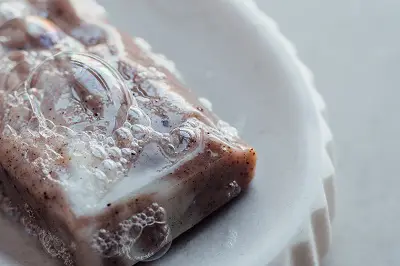
To obtain a solid homemade shampoo that foams, the choice and dosage of surfactants will be decisive. The best combination to make a solid homemade shampoo that is both foaming and not very aggressive for your hair is: Sodium Cocoyl Isethioniate (SCI) + Sodium Coco Sulphate (SCS).
![]() This recipe is more suitable for normal hair.
This recipe is more suitable for normal hair. ![]() Conservation: 6 months.
Conservation: 6 months.
 The recipe for foaming homemade solid shampoo for normal hair:
The recipe for foaming homemade solid shampoo for normal hair:
- 40 g Sodium Coconut Sulfate Surfactant (SCS)
- 20 g Sodium Cocoyl Isethioniate (SCI) Surfactant
- 10 g of Jojoba vegetable oil
- 12 g Shikakai powder
- 8 g of orange powder
- 10 g of damask rose hydrosol (or water)
 The preparation of your solid shampoo:
The preparation of your solid shampoo:
- Put the solid surfactants, water base, powders, vegetable oil (s) or vegetable butter in a bowl going in a bain-marie. If you have opted for the addition of co-emulsifier or cosmetic active ingredients, put them with.
- Melt the whole over low heat and stir throughout the preparation with a wooden spatula until a sticky and homogeneous paste is obtained (about 20 minutes in a double boiler). You can use a pestle to crush ingredients that have a hard time melting or dissolving like surfactants for example.
- Once the mixture has melted and the dough is obtained, remove the preparation from the bain-marie, and add the essential oils if you have decided to put some, by mixing using the spatula or pestle.
- Once the preparation has cooled slightly, knead your dough to distribute the essential oils well.
- Before the dough cools, transfer the dough into your mold (s) and pack well.
- Leave your preparation in the molds between 2 minimum hours up to one day at room temperature. We recommend that you do not place them in the refrigerator to prevent them from weakening or crumbling.
- Unmould your solid shampoo when it has become very hard and let it air dry (room temperature) for at least 3 days and up to a week to prevent it from melting too quickly.
Foaming liquid shampoo - Dry, damaged or brittle hair
 This recipe is taken from the MyCosmetik site. To make your recipe in just one click and make your life easier, you can find the entire recipe (raw materials, preparation, preparation tips, recipe basket, etc.) on this page.
This recipe is taken from the MyCosmetik site. To make your recipe in just one click and make your life easier, you can find the entire recipe (raw materials, preparation, preparation tips, recipe basket, etc.) on this page.
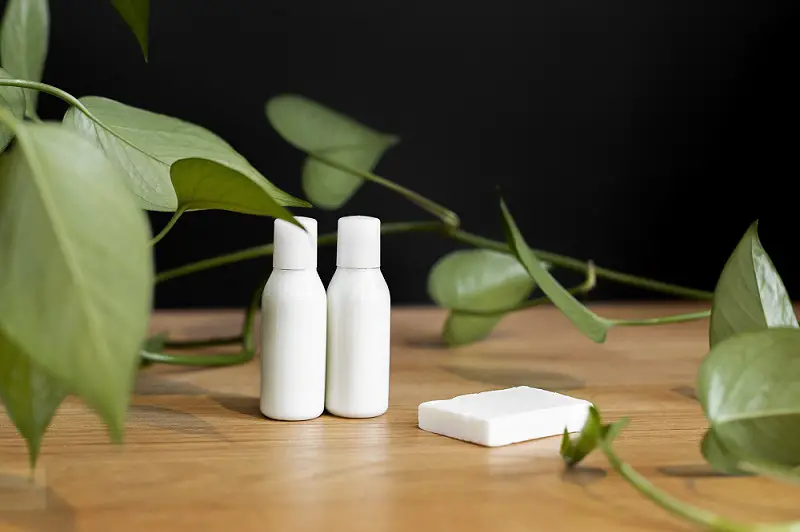
Thanks to its foaming washing base and its consistent washing base, you will practically find the same amount of foam as with an industrial shampoo! The difference is that the foam is of plant origin and easily biodegradable.
![]() The shampoo recipe that will lather the best!
The shampoo recipe that will lather the best!![]() It is especially suitable for dry and curly hair.
It is especially suitable for dry and curly hair. ![]() Conservation: 3 months.
Conservation: 3 months.
 250ml liquid homemade shampoo recipe that foams:
250ml liquid homemade shampoo recipe that foams:
- 25 ml of Lavender Hydrosol
- 65 ml of sterilized water
- 10 ml of vegetable olive oil
- 40 drops of ylang ylang essential oil
- 45 drops of Isocide
- 3 ml of Rice Protein
- 50ml of Vegetable foaming base
- 90 ml Consistent washing base
- 2.5 ml of Cetiol
- 8 ml of Phytokeratin
 Preparation of liquid homemade shampoo 250ml:
Preparation of liquid homemade shampoo 250ml:
- Put the consistent washing base to melt water bath. Stir lightly.
- As soon as all the small white grains have completely melted and that the preparation to a transparent and homogeneous consistency, remove there from the water bath. Then add sterilized water still lukewarm.
- Mix gently until the preparation is smooth. Once the case, pour in the vegetable foam base in the preparation and continue to mix. Wait about ten minutes for the preparation to cool.
- Once the preparation has cooled down, add lavender hydrosol, cetiol, rice protein, phytokeratin, and isocide and mix the ingredients.
- To finish, pour in the olive oil and the essential oil drops. Mix until you obtain a thick homogeneous liquid.
- Transfer everything to a container or a 250 ml bottle.
source: Mycosmetik
Homemade liquid shampoo that foams - Oily hair
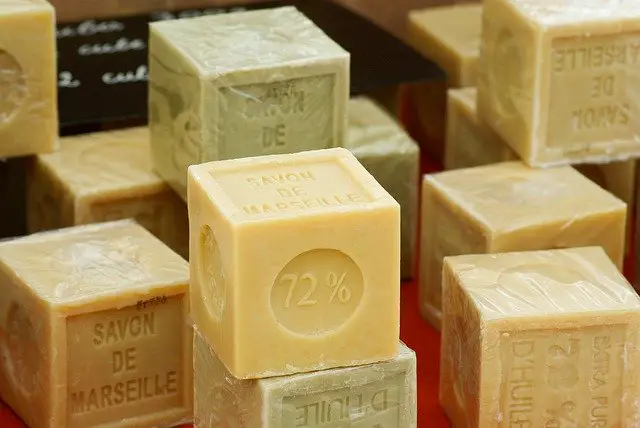
Le Marseille's soap lets you wash your hair and lather your homemade shampoo. Solid in nature, you will need to crumble it to use it. We advise you to add a vegetable foam base to have a liquid shampoo that foams very well. It will therefore be a very good complement to foam to accompany Marseille soap.
![]() This recipe is more suitable for oily hair.
This recipe is more suitable for oily hair. ![]() You can change the powder and oils to suit your hair type.
You can change the powder and oils to suit your hair type. ![]() Conservation: 3 months.
Conservation: 3 months.
 The recipe for homemade liquid shampoo 50 cl:
The recipe for homemade liquid shampoo 50 cl:
- 30g of Marseille's soap
- 20 ml vegetable foam base
- 45 cl water
- 2 tablespoons of white or green clay
- 2 tablespoons of hazelnut oil
- 1 tablespoon of jojoba oil
- 1 tablespoon baking soda
- 10 drops of Atlas cedar essential oil (optional)
 The preparation of the homemade liquid shampoo:
The preparation of the homemade liquid shampoo:
- Crumble the Marseille soap in chips.
- In a saucepan, pour the water, the cut Marseille soap, then once the soap has melted, add the vegetable oils, the sugar foam and the clay powder. Mix everything over low heat.
- Let your preparation cool before add the baking soda and the essential oil of Atlas Cedar.
- Pour the mixture into a container and stir well before each application. The resulting shampoo should be a thick liquid.
Please note: We recommend that you systematically control (and if necessary adjust between 5 and 7) the pH of your preparation. To do this, use pH paper strips that you can find in pharmacies. If you have to decrease too high a pH, use lactic acid or citric acid. To increase too low a pH, use sodium bicarbonate.

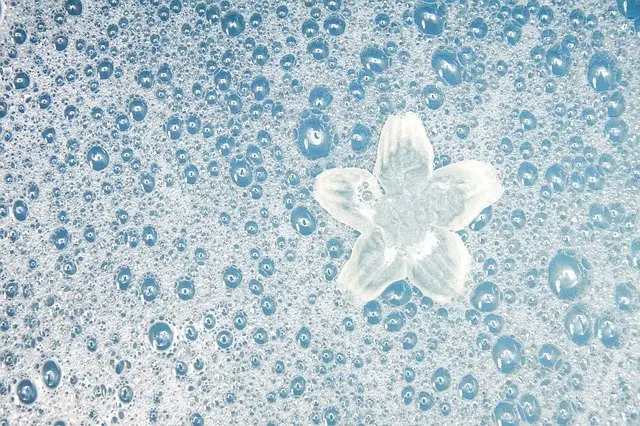
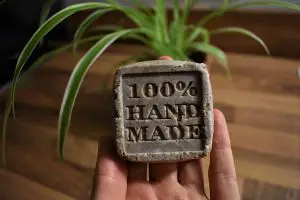
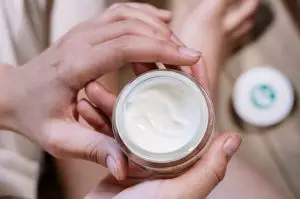
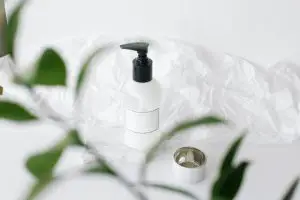

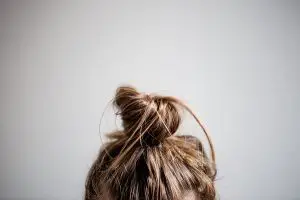

Hello, not being a chemist or getting all these products
cordially
Hello,
Personally I order on the mycosmetik site: https://www.mycosmetik.fr/#ae260. But there are many other sites that offer raw materials for cosmetics 🙂 I think you just have to type the name of the product you are interested in on the google search bar and you should quickly find what you are looking for on many merchant sites. If you prefer physical stores, Aroma Zone is the market leader and it exists in many major cities.